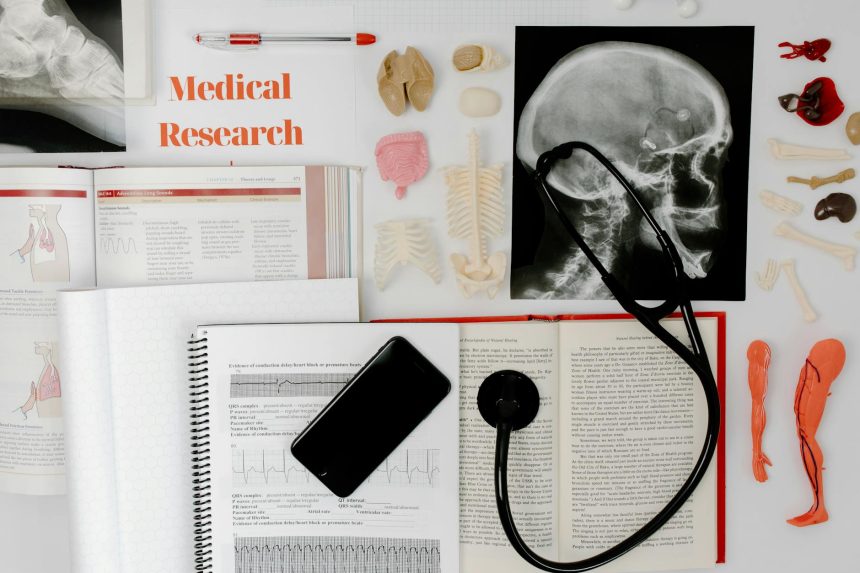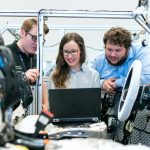Self-Driving Labs: LLMs Supercharge Lab Automation
Imagine a world where scientific discovery happens at lightning speed, where experiments run themselves, and breakthroughs are no longer bottlenecked by human capacity. This isn’t science fiction; it’s the rapidly approaching reality powered by the incredible advancements in Large Language Models (LLMs). These sophisticated AI systems are not just changing how we communicate or create content; they are fundamentally revolutionizing laboratory automation, paving the way for what are being called “self-driving laboratories” (SDLs). This seismic shift promises to accelerate the pace of innovation across countless fields, from medicine to materials science.
The Dawn of Intelligent Scientific Exploration
For decades, laboratory automation has been a cornerstone of scientific progress. Robotic arms, automated liquid handlers, and sophisticated data analysis software have all played crucial roles in increasing throughput and reducing human error. However, these systems often operate within predefined parameters, requiring significant human oversight and intricate programming for each new experiment or research question. The introduction of LLMs injects a new level of intelligence and adaptability into this ecosystem.
What Exactly Are Self-Driving Laboratories?
Self-driving laboratories represent a paradigm shift in experimental design and execution. Instead of scientists meticulously planning every step of an experiment, LLMs can interpret high-level research goals, generate experimental hypotheses, design the necessary protocols, control robotic equipment, and even analyze the results. The laboratory essentially becomes an autonomous entity, capable of learning and iterating on its own, guided by AI.
LLMs: The Brains Behind the Brawn
At the heart of this transformation are LLMs. Their ability to understand and generate human-like text, process vast amounts of information, and identify complex patterns makes them uniquely suited for the intricate demands of scientific research. LLMs can:
- Comprehend scientific literature to identify knowledge gaps and propose novel research directions.
- Translate broad research questions into specific, actionable experimental designs.
- Generate code to control laboratory automation hardware, including robots and analytical instruments.
- Interpret complex experimental data, identify trends, and suggest follow-up experiments.
- Learn from experimental outcomes to refine future hypotheses and protocols.
Accelerating Discovery: The Impact on Research
The implications of self-driving laboratories are profound and far-reaching. The sheer speed at which LLM-powered automation can operate could dramatically shorten the time it takes to bring new discoveries from the lab bench to the real world.
Materials Science: A New Frontier
In materials science, the search for novel materials with specific properties is a painstaking process. Traditionally, it involves synthesizing and testing thousands of compounds. LLMs can analyze existing material databases, predict the properties of hypothetical materials, and design synthesis routes. This drastically reduces the experimental space, allowing researchers to focus on the most promising candidates. For instance, an LLM could be tasked with finding a new lightweight, high-strength alloy for aerospace applications, or a more efficient catalyst for sustainable energy production. The SDL can then autonomously synthesize and test these predicted materials, providing rapid feedback to the LLM for further refinement.
Drug Discovery and Development
The pharmaceutical industry is another area ripe for disruption. Identifying potential drug candidates, optimizing their structure, and predicting their efficacy and toxicity are incredibly complex and time-consuming. LLMs can sift through enormous biological and chemical datasets, identify potential drug targets, design molecules likely to interact with those targets, and even predict potential side effects. An SDL can then execute the necessary high-throughput screening and cell-based assays, accelerating the early stages of drug discovery exponentially.
Personalized Medicine
The promise of personalized medicine, where treatments are tailored to an individual’s genetic makeup and specific disease profile, could also be realized faster. LLMs can analyze a patient’s genomic data, medical history, and other relevant factors to suggest the most effective treatment options. An SDL could then perform rapid diagnostic tests or even synthesize personalized drug compounds tailored to that individual’s unique biological needs.
The Pillars of a Self-Driving Lab
Building a functional self-driving laboratory requires the integration of several key components, with LLMs acting as the central orchestrator.
1. The AI Core (LLM)
This is the intelligence engine. It receives high-level objectives, processes information, generates hypotheses, plans experiments, and interprets results. Its ability to learn and adapt is crucial.
2. Experimental Design and Protocol Generation
LLMs can translate abstract research goals into concrete, step-by-step experimental protocols, specifying reagents, equipment settings, and measurement parameters.
3. Robotic Automation and Hardware Integration
Sophisticated robotic systems, including liquid handlers, robotic arms, and automated microscopy, are the physical executors. LLMs must be able to interface with and command these diverse pieces of hardware.
4. Data Acquisition and Analysis
Sensors and analytical instruments collect vast amounts of data. The LLM needs to process this data in real-time, often identifying anomalies or unexpected outcomes, and making decisions about the next steps.
5. Feedback and Learning Loops
Crucially, the system must learn from its successes and failures. The results of each experiment feed back into the LLM, allowing it to refine its understanding, improve its hypotheses, and optimize future experimental designs. This iterative process is what makes the lab “self-driving.”
Challenges and the Road Ahead
While the potential is immense, the path to widespread adoption of self-driving laboratories is not without its hurdles. Ensuring the safety and reliability of AI-controlled experiments is paramount. The ethical implications of AI in scientific discovery also need careful consideration. Furthermore, integrating diverse hardware and software systems from various vendors presents a significant technical challenge.
However, the progress being made is undeniable. Companies and research institutions are actively developing and deploying these systems. The ability of LLMs to understand complex scientific language and generate coherent, actionable plans is a game-changer. As these models become more sophisticated and the integration of hardware becomes more seamless, we can expect to see an unprecedented acceleration in scientific discovery.
The transformation of laboratory automation by LLMs into self-driving laboratories is not just an incremental improvement; it’s a revolution. It promises to unlock new frontiers of knowledge, solve some of the world’s most pressing challenges, and redefine the very nature of scientific research. The era of intelligent, autonomous scientific exploration has truly begun.
The future of scientific discovery is here, and it’s driving itself. Are you ready to witness the acceleration?
What are your thoughts on the future of AI in laboratories? Share your predictions and concerns in the comments below!





